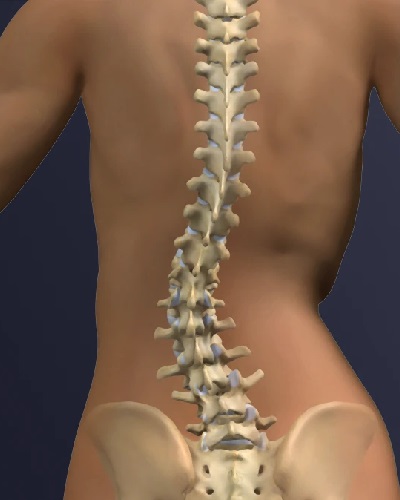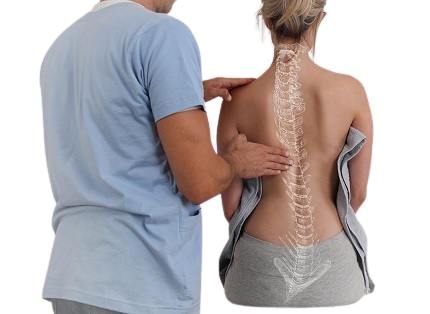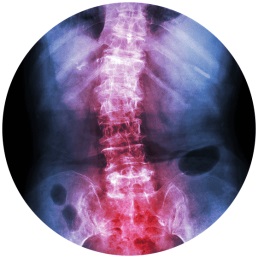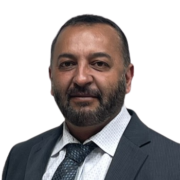Scoliosis Symptoms & Treatment Options
Scoliosis is a form of spinal deformity that develops when the spine arcs in an abnormal, side-to-side curvature. A healthy spine should grow in a specific direction with a gentle forward and backward curvature. This design supports the weight of the body and our movements. When viewed from the front, your spine should form a straight line from the base of the skull to your tailbone. When viewed from the side, a healthy spine will adhere to a gentle curve. This arc bends backward at the neck and shoulders, before curving gently forward at the low back. If this typical shape is flawed or develops abnormally, a condition called scoliosis can occur.
Scoliosis is a progressive condition that worsens over time. Unlike many other spinal conditions, moderate to severe scoliosis can be distinguished through visual inspection. If you are suffering from this condition, your spine will adopt an abnormal S shaped curve from side to side. This abnormal arcing may involve one or more rotations. Unfortunately, the causes of this spinal abnormality are diverse, and often, unknown. The key to a successful treatment is early and frequent interventions. If you or someone you know is noticing a change in the shape of their spine, don’t wait to seek help.
Major Types of Scoliosis
Many people view scoliosis as a condition that predominantly affects adolescents and teens. However, this is not entirely true. Scoliosis can also affect adults. Depending on your age, the cause and severity, your condition and prognosis can vary greatly. The major age-related types of this condition include:
Pediatric Scoliosis
Pediatric Scoliosis can appear at any age during childhood, adolescence, or the teenage years. Using ultrasound technology, your doctor can even detect spinal deformities in an developing fetus! Most typically, however, individuals notice abnormalities during the teenage years, as visible changes in the spine appear. Because the adolescent years are crucial to spine development, untreated scoliosis can follow an individual into adulthood.
Adult Scoliosis
Adult Scoliosis typically results from a separate set of causes than pediatric scoliosis. Although the condition can develop in adolescence and follow an individual into adulthood, adult-onset scoliosis is usually caused by spinal degeneration. This breakdown is often associated with the aging process. Degenerative disc disease, damaged discs, spinal stenosis, spondylolisthesis, and arthritis can all lead to spinal damage—and adult scoliosis.
When Scoliosis Becomes A Problem
When it comes to the treatment of scoliosis, the first step is usually observation. If your scoliotic curve is minor, your physician may choose to monitor your spine over time. Your doctor will evaluate your spine for changes and make treatment decisions based on any changes that occur.
When scoliosis is severe or progressing rapidly, your physician may choose a more aggressive route. In these situations, an exaggerated spinal rotation can interfere greatly with one’s quality of life. Extreme curvature can impede movement and posture. If the extreme curvature of the spine strains muscles or pinches nerves, significant pain or reduced mobility can occur. Furthermore, severe curvature can even affect the function of your internal organs, distressing your heart and lungs.
More about Dr. Matin
Scoliosis Symptoms & Treatment Options
Scoliosis pain can be treated by Dr. Martin, give us a call to schedule an appointment.
We will provide different options of treatment.
Vertebral Body Shaping
This method of correction involves wedging and/or augmenting the size and shape of one or more vertebrae. Then screws are attached on the side of the spine and fused with the vertebrae over time. Once reshaped, the vertebral bodies grow solid to support the spine countered or shaped in a better angle.
Osteotomy
An osteotomy is a procedure that is used to restructure the shape of the spine through bone removal. Bone is removed in order to allow the vertebrae to fit together in a more functional manner. Hardware such as screws and rods may be needed to provide long-term stability.
Bracing
The use of external braces to treat scoliosis has been practiced for many years now. New advances in this technology have made braces more comfortable and less bulky. Depending on your situation, your physician may prescribe a hard, rigid brace or a soft, flexible one.
Physical Therapy
Physical therapy is a widely successful and prescribed form of scoliosis treatment. It helps improving strength and flexibility, regaining movement, and encouraging independence. Your physician will refer you to a physical therapist when needed.






